Apogee's products and services play a critical role in preserving precious resources
Apogee is a long-time leader in delivering innovative products and services that help conserve precious resources. Our architectural products and services help architects, developers, and building owners achieve their green building and sustainability goals, and our high-performance glass and acrylic glazing solutions are trusted by conservation and fine art professionals to protect some of the most celebrated works of art in the world. Many of our architectural products are manufactured using aluminum and glass, materials that are fully recyclable at the end of their useful lives.
Innovative Products & Services that Enable Green Building
Across Apogee's architectural businesses, nearly every product and service we provide can help architects, developers, and building owners achieve their green building and sustainability goals. Apogee's products help improve buildings' energy efficiency and reduce greenhouse gas emissions; provide daylighting and natural ventilation; and increase comfort and protection for occupants.
Apogee offers a comprehensive selection of high-performance windows, curtainwall, storefront and entrance systems designed to reduce energy consumption and greenhouse gas emissions, while increasing building comfort and performance. Apogee’s line-up of thermal framing products includes:
- Alumicor’s ThermaWall 2600 thermally broken curtain wall
- EFCO’s XTherm® windows, storefront, and curtainwall
- Tubelite’s Therml=Block entrance, storefront, and curtainwall products
- Wausau Window and Wall’s INvent™ energy-efficient operable windows
- Harmon’s SMU6000 and UCW8000 curtainwall
Glass coatings are thin layers of metal applied to glass to improve solar performance. Our Viracon business offers a broad selection of proprietary reflective and Low-E coatings designed to achieve strict environmental and energy specifications.
We offer products such as sunshades and interior light shelves, designed to reduce solar heat gain, maximize natural daylighting and reduce buildings’ overall energy consumption. Products include EFCO’s XTherm E-Shade and Tubelite’s MAXBLOCK® sun shades and aLuminate™ light shelves
We offer high-performance aluminum finishes that contribute to buildings’ longevity and sustainability. Our eco-friendly anodize finishes generate 90% less landfill waste than traditional anodize processes, use less energy to produce, and enable the use of recycled aluminum billet. Our architectural paint coatings are applied using processes that capture and destroy the VOCs present in the paint before products arrive at a building site.
Recycled aluminum content can be specified on a number of Apogee’s framing products, including Tubelite, Wausau and EFCO products.
Apogee offers a wide-range of renovation solutions to modernize aging buildings, resulting in dramatically improved energy performance, reduced maintenance costs and improved occupant comfort, while preserving historically accurate aesthetics. We offer energy modeling and thermal imaging to analyze potential energy savings; and specification, design, and detailed assistance to select the right set of high-performance glass and framing products to achieve energy-efficiency goals.
Apogee offers framing and glass products that protect buildings and their occupants from a variety of hazards. Hurricane and wind protection products are essential in mainly coastal regions. Blast hazard mitigation products, ballistic and forced entry protection, and protection against electronic eavesdropping are vital design criteria on many government and other high-profile buildings.
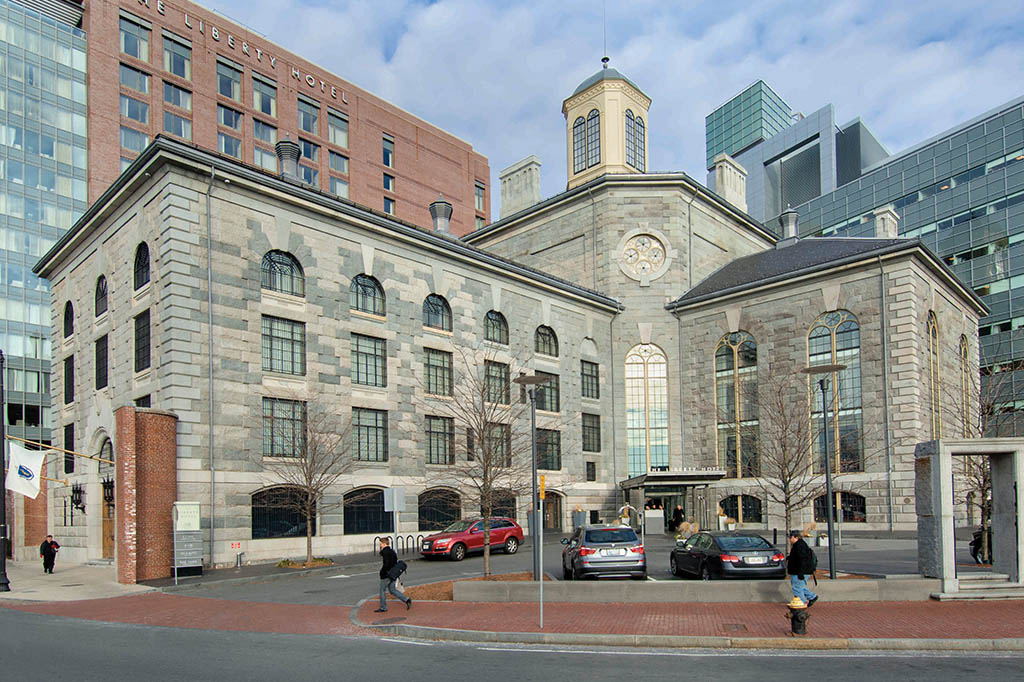
Delivering improved energy-efficiency for historic buildings
Few actions demonstrate environmental stewardship better than respectfully modernizing historic buildings with today’s energy-saving technologies. Apogee offers a complete renovation solution to enhance the aesthetics and energy efficiency of commercial buildings’ glass, windows, curtainwall, storefront, and entrances.
Window systems and components have evolved significantly since the 1980’s. Yet about half of all U.S. commercial and institutional buildings were constructed prior to this period, which presents a significant opportunity for building owners to enhance energy-performance and reduce emissions. Replacing old windows with new systems that utilize high-performance glass and thermally-broken aluminum frames can deliver energy savings of up to 40%. Furthermore, window replacement can significantly improve buildings’ HVAC and lighting system performance.
Apogee Renovation offers utility-grade energy modeling services to estimate the potential savings from updating a building’s envelope. We also utilize thermal imaging to show the temperature profile of a building’s envelope and identify weak points such as heating and cooling losses and air and water infiltration.
Apogee offers solutions that maintain the historical aesthetics of buildings, by using energy-efficient window systems that replicate the distinctive design details of historic windows. Our products have been utilized on some of the most recognizable building renovation projects in the U.S.
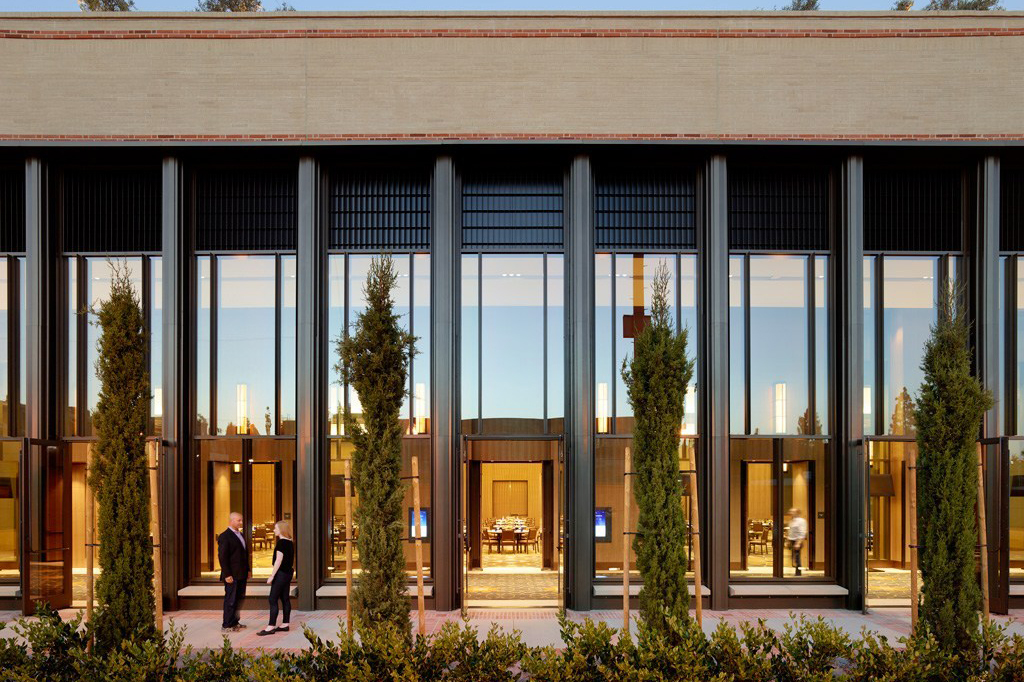
Apogee helps the UCLA Luskin Conference Center set a high bar for sustainability
University of California Los Angeles’ Meyer and Renee Luskin Conference Center (UCLA Luskin Conference Center) sets a new standard for conference centers and hotels. The $162 million building earned LEED Platinum certification and is considered one of the most sustainable hotels in the U.S.
Apogee’s Wausau Window & Wall Systems provided high-performance windows, terrace doors and curtainwall, which contributed to the building’s overall energy efficiency. In addition to meeting strict energy-efficiency requirements, the framing systems were produced using high recycled-content aluminum billet. Apogee’s Linetec business provided eco-friendly finishes for the aluminum framing that will contribute to the building’s longevity and durability.
Hotel guests enjoy a comfortable indoor temperature in the California sun thanks, in part due to Viracon’s VNE13-63 clear Opti-White solar-control, low-e, insulating glass, and Wausau windows’ and doors’ polyamide thermal barriers. A custom air vent at the top of the windows integrates with the conference center’s HVAC system. When the weather allows, the windows’ air vents and terrace doors can be opened for natural ventilation. The combination of high thermal performance glass and operable doors also further reduces the building’s HVAC load and energy use.
UCLA Assistant Vice Chancellor of Housing and Hospitality Services, Peter Angelis, commended the building’s design team, “[They] did everything possible to incorporate sustainability in a meaningful way to ensure that this building and operation will leave the smallest environmental impact possible.”
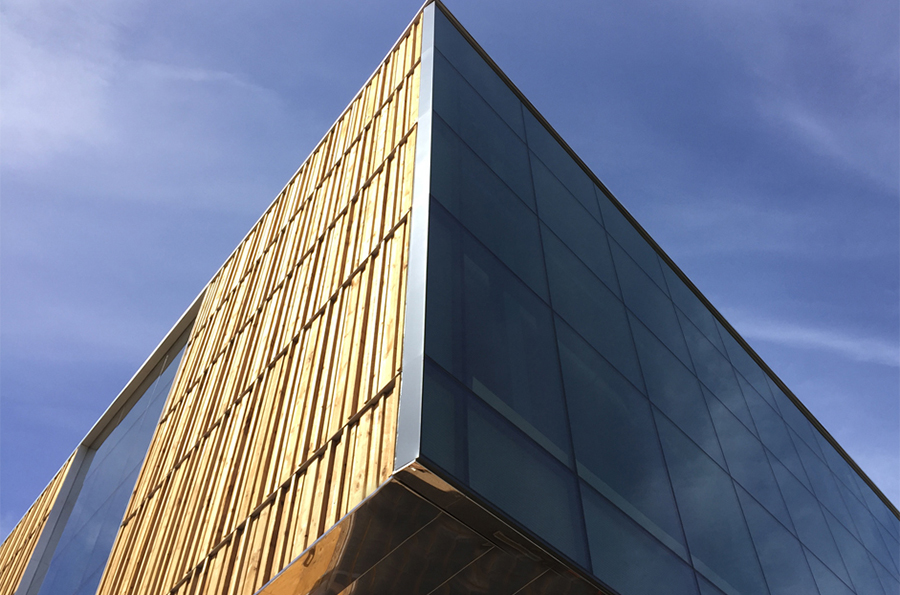
New museum features bird-friendly glass from Viracon
The Bell Museum of Natural History in St. Paul, MN, opened a new $65-million facility in 2018 that features an external façade that is not only visually pleasing, but boasts a customized design that minimizes bird-related collisions.
Apogee’s Viracon business produced screen printed glass windows, which consist of VNE1-63 insulating glass and integrate line patterns to appear as solid surfaces to birds. Humans can’t see the pattern until they’re six inches away, but birds can. Aesthetically, the product allows a designer to create a subtle or bold look for a building using patterns and color. Furthermore, the design was combined with high-performance coatings to reduce glare and solar transmission for increased energy savings and reduced emissions.
This project reflects Viracon’s commitment to investing in bird-friendly solutions. The company has participated in ongoing research to understand the effect of various glass products and their potential to reduce bird strikes. To date, Viracon’s focus has been finding practical solutions using conventional glass products and enhancements to those products.
Over the years, Viracon has been actively involved with research on this topic, working with agencies such as the American Bird Conservancy, and other organizations around the United States. Through our collaborative work we continue to improve our understanding of the fabrication options we can offer to minimize bird collisions with glass.
Contributing to LEED Certification
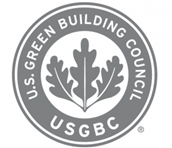
Apogee Products and Services Contribute to LEED Certification
Several Apogee business units are members of the U.S. Green Building Council (USGBC) and have joined with the USGBC to support its Leadership in Energy and Environmental Design (LEED) program.
Apogee has certified LEED Green Associates on staff to help our customers meet their green building objectives, and our products can contribute to a number of LEED program points. We're proud of the role we've played in many LEED certified buildings.
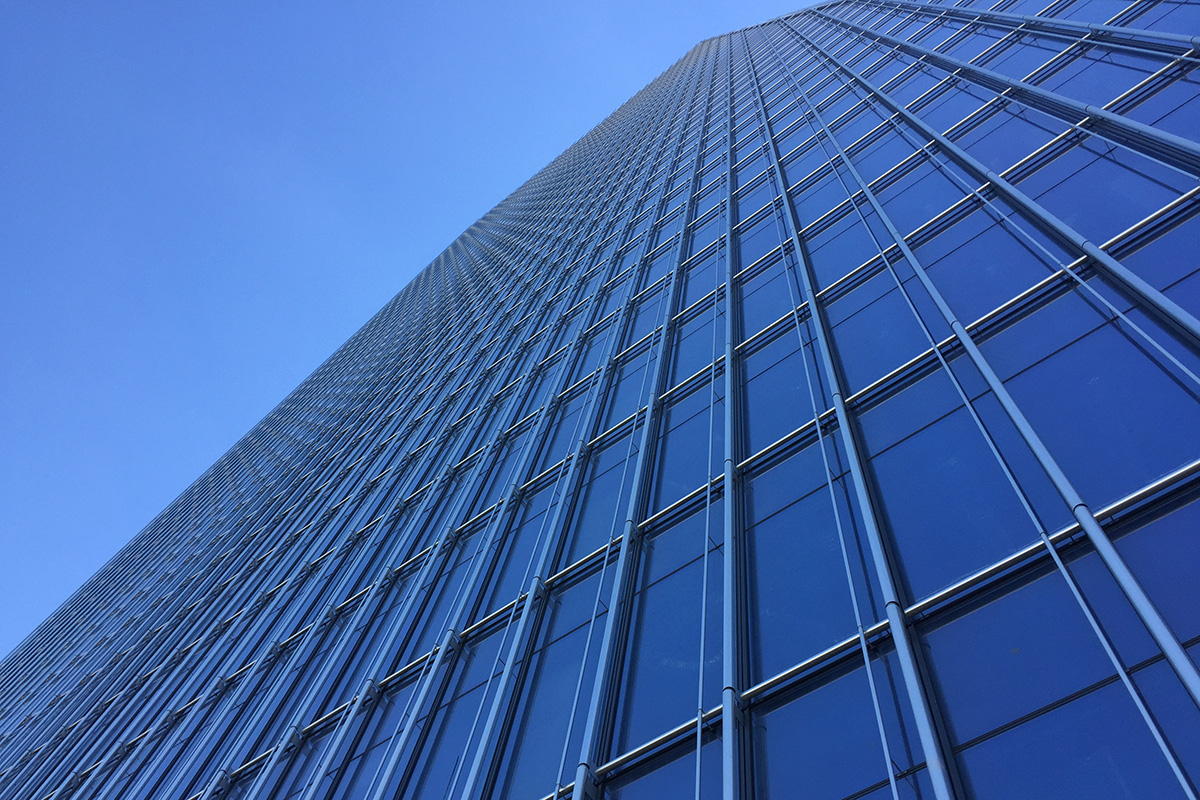
609 Main
Houston, TX
LEED Platinum
- Harmon curtainwall, sunshades and entrances; Viracon glass
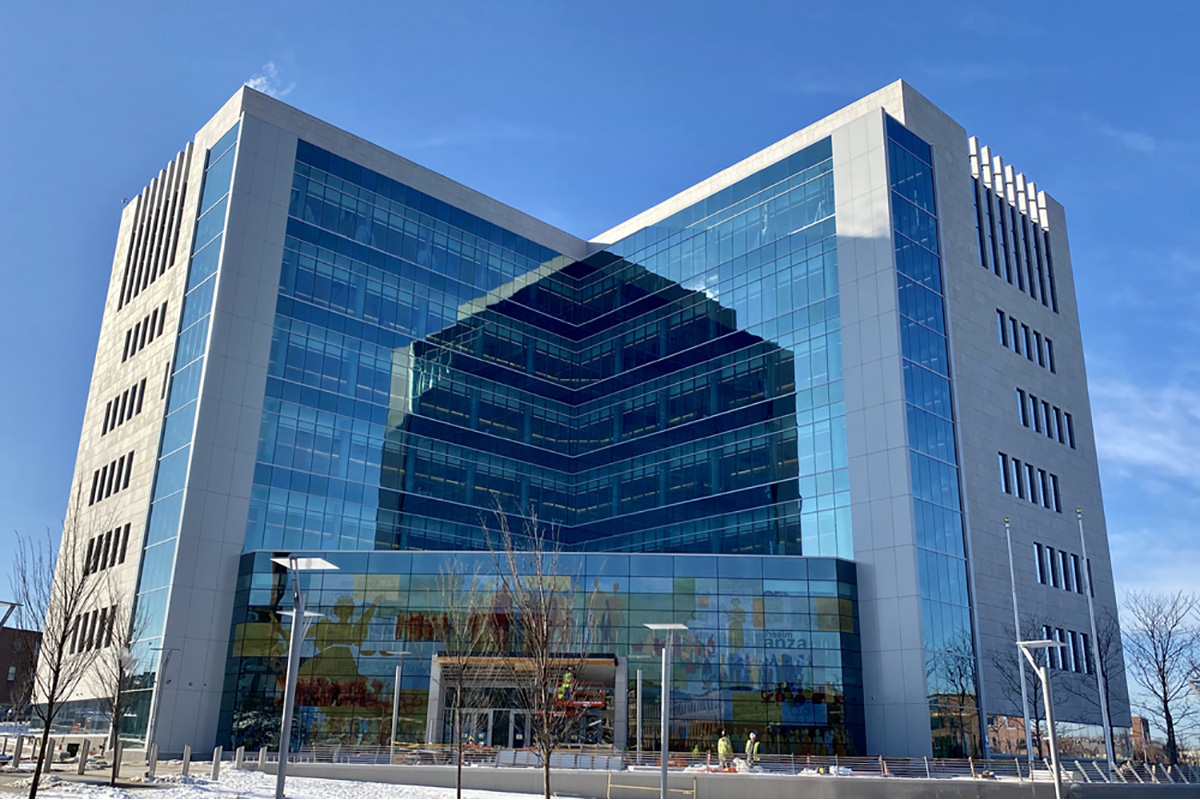
Lowell Justice Center
Lowell, MA
LEED Platinum
- Wausau curtainwall and sunshades; Viracon glass

Mercedes-Benz Stadium
Atlanta, GA
LEED Platinum
- Viracon insulating glass

National Renewable Energy Laboratory (NREL) Research Support Facilities
Golden, CO
LEED Platinum
- Viracon triple insulating glass
- Wausau windows and curtainwall
- Linetec finishing
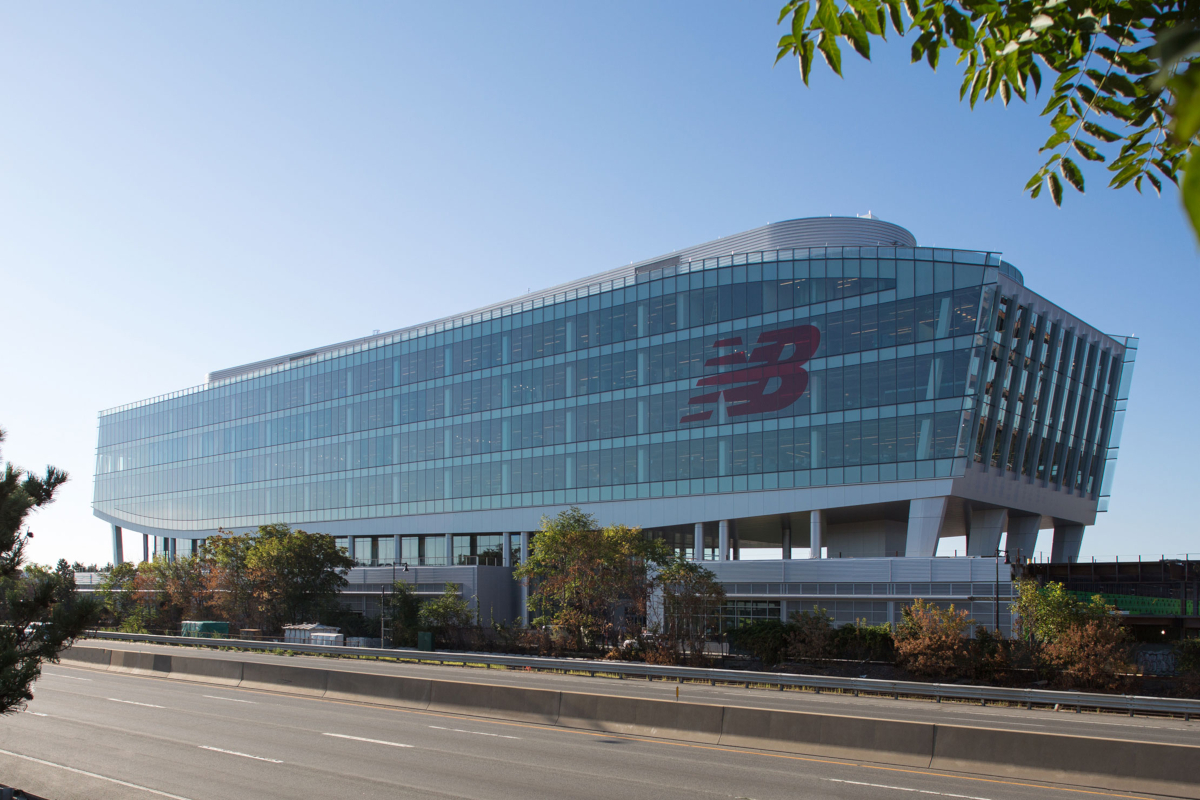
New Balance Headquarters
Brighton, MA
LEED Platinum
- Sotawall THERMO-3 Series curtainwall
- Viracon insulating and laminated glass
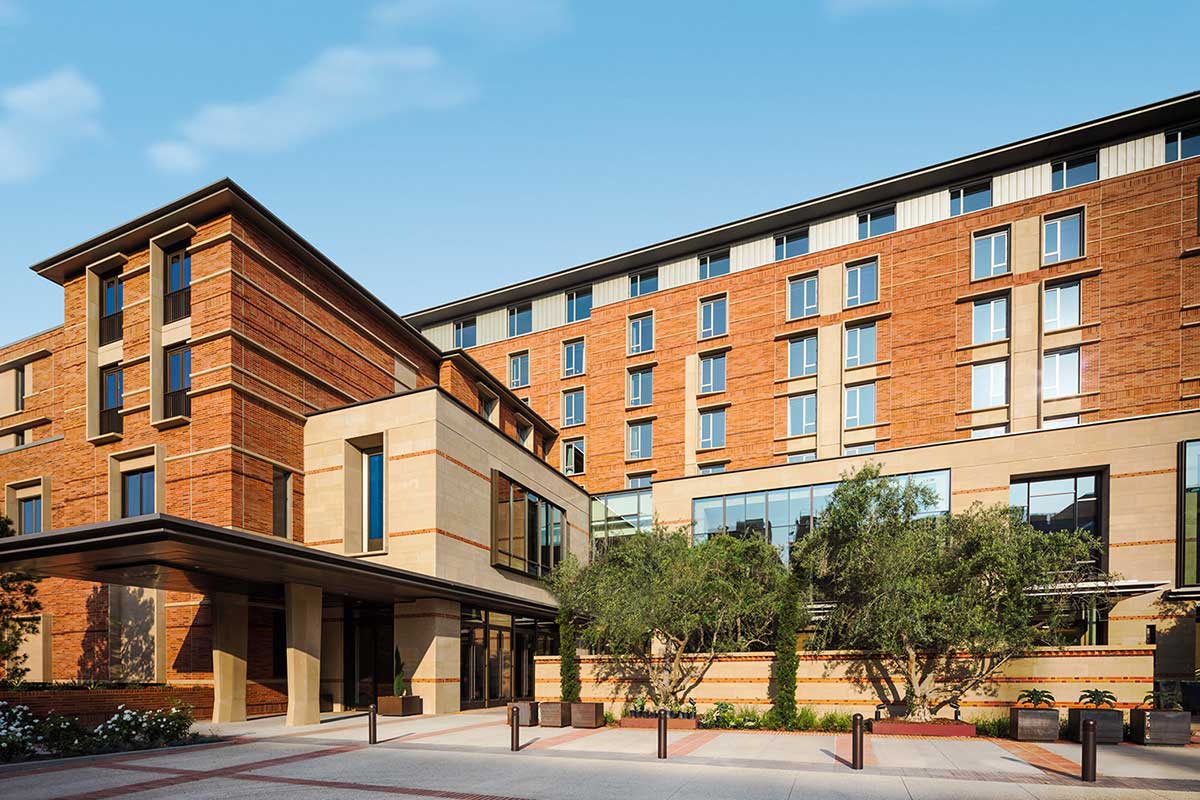
UCLA Luskin Conference Center
Los Angeles, CA
LEED Platinum
- Wausau windows, doors and curtainwall
- Viracon glass
- Linetec finishing
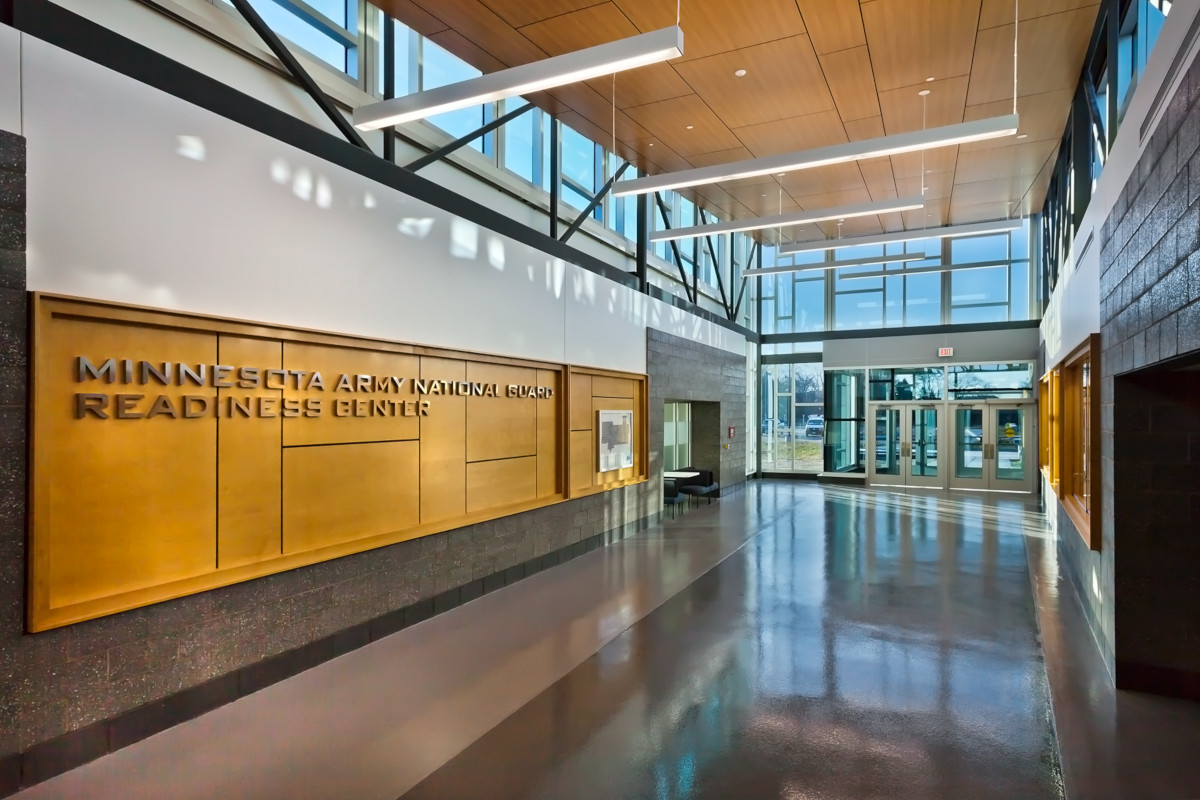
Minnesota National Guard Arden Hills Training Site
Arden Hills, MN
LEED Silver
- Wausau windows and curtainwall
- Tubelite Therml=Block® entrance systems
- Viracon glass
- Linetec finishing
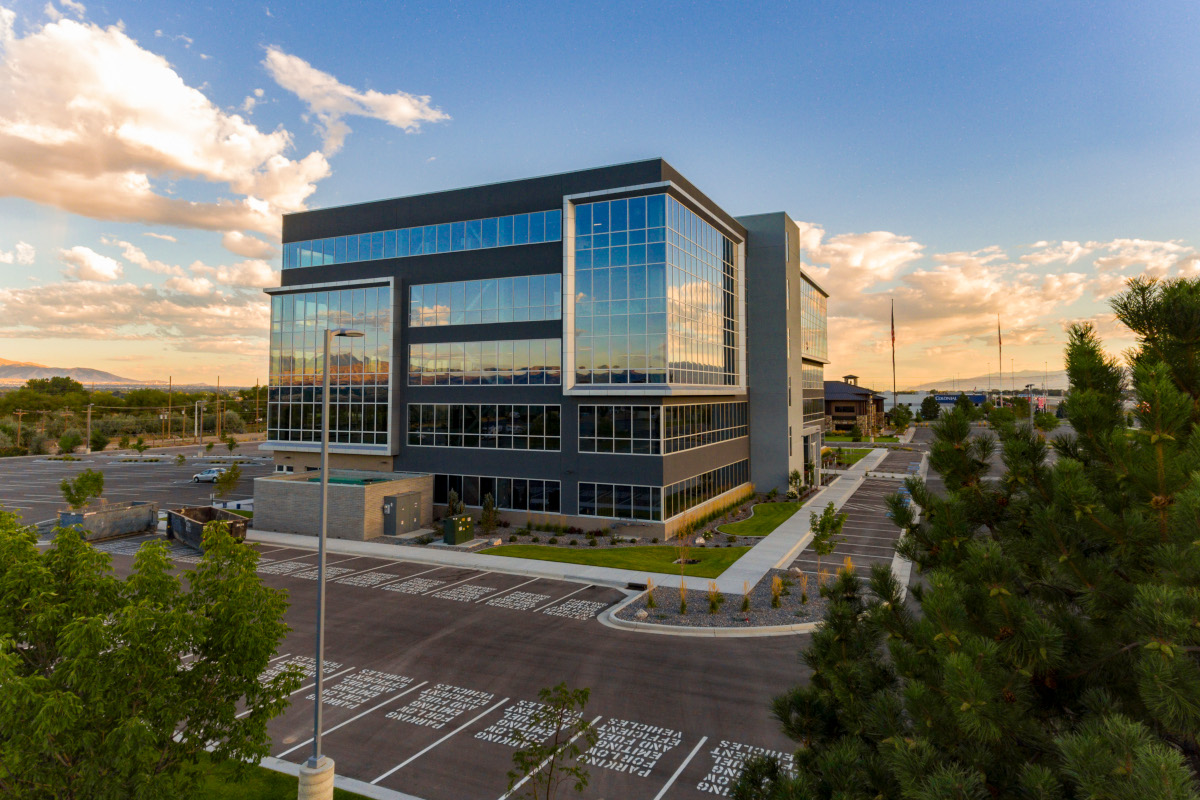
Sandy Commerce Park
Sandy, UT
LEED Silver
- Tubelite storefront, entrance, and curtainwall systems
- Viracon glass
- Linetec finishing

U.S. Coast Guard Headquarters
Washington, D.C.
LEED Gold
- Harmon unitized curtainwall
- Viracon glass
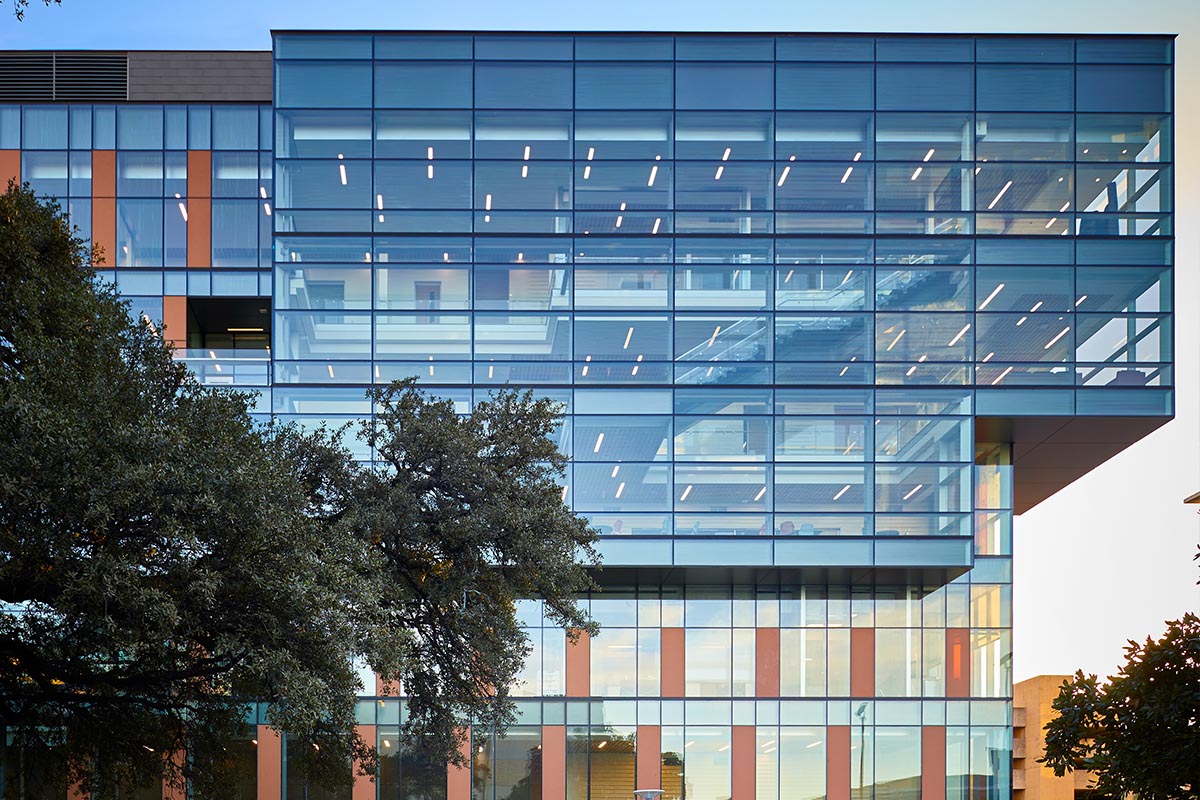
UT Dell Health Learning Building
Austin, TX
LEED Gold
- EFCO curtainwall and doors
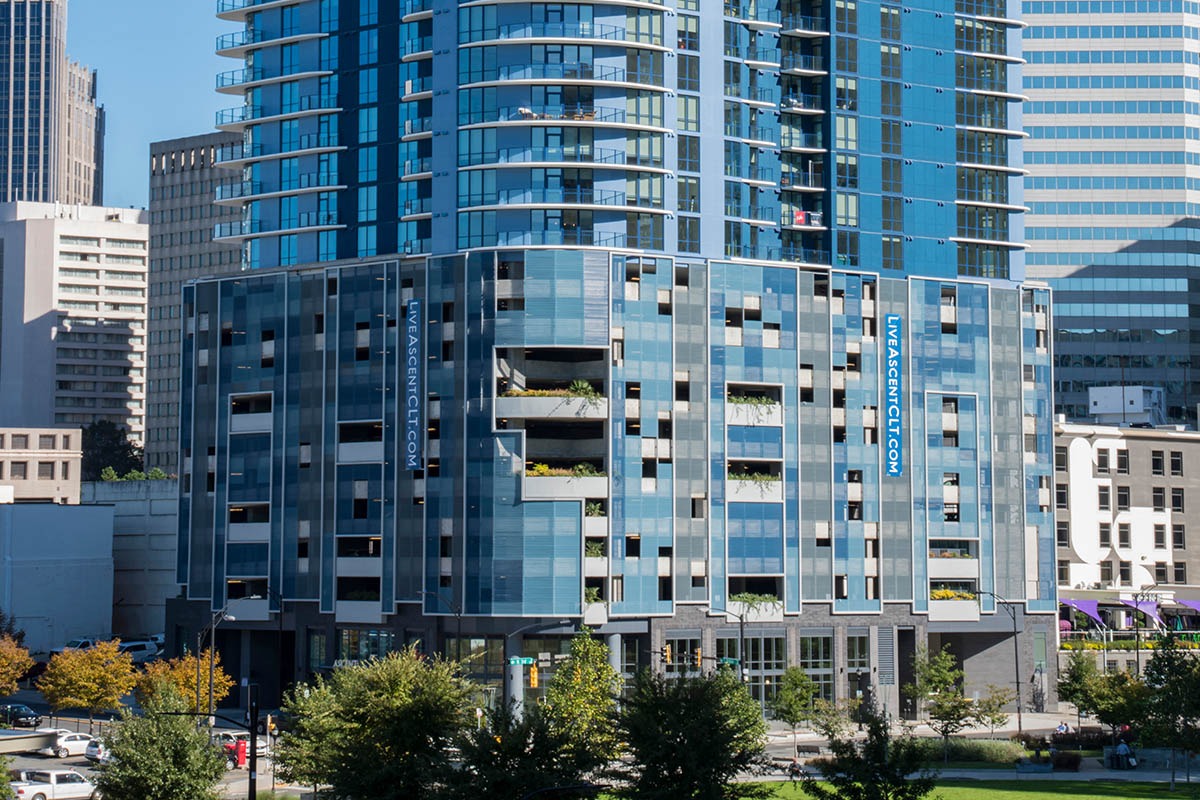
Ascent Uptown
Charlotte, NC
LEED Silver
- EFCO curtainwall, storefront, windows and doors
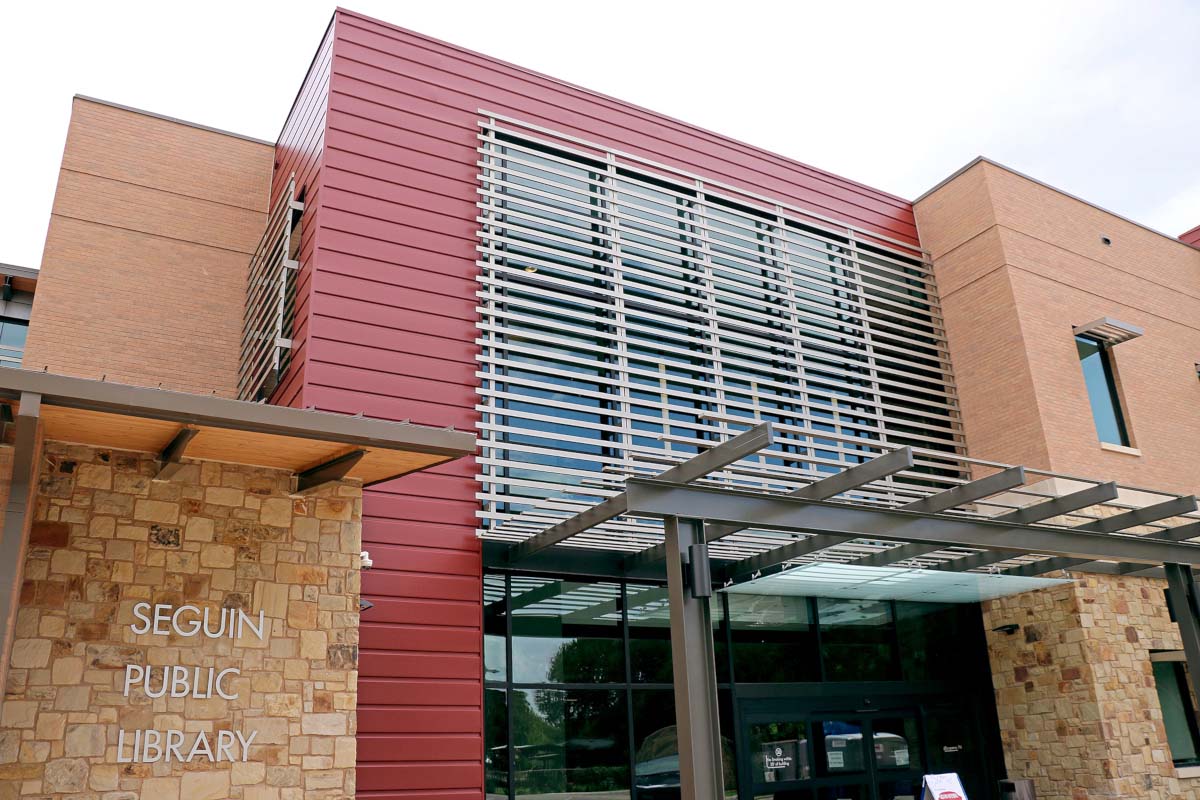
Seguin Public Library
Seguin, TX
LEED Gold
- Tubelite storefront and curtainwall systems
- Linetec finishing
Conserving Fine Art and Preserving Memories
Apogee's commitment to conservation extends beyond our architectural products. Many of the world's most renowned museums entrust the protection and preservation of priceless works of art to our Tru Vue Optium Acrylic Glazing. Our conservation grade glazing products provide up to 99% protection against harmful UV radiation, the maximum level of protection available in the industry. In addition to protecting fine art, our UV blocking glass and acrylic products help preserve keepsakes, collectibles, and precious artworks in the homes of families across the U.S. and the world.
“Adoration of the Magi” Tapestry in Exeter College Chapel protected by Tru Vue Optium
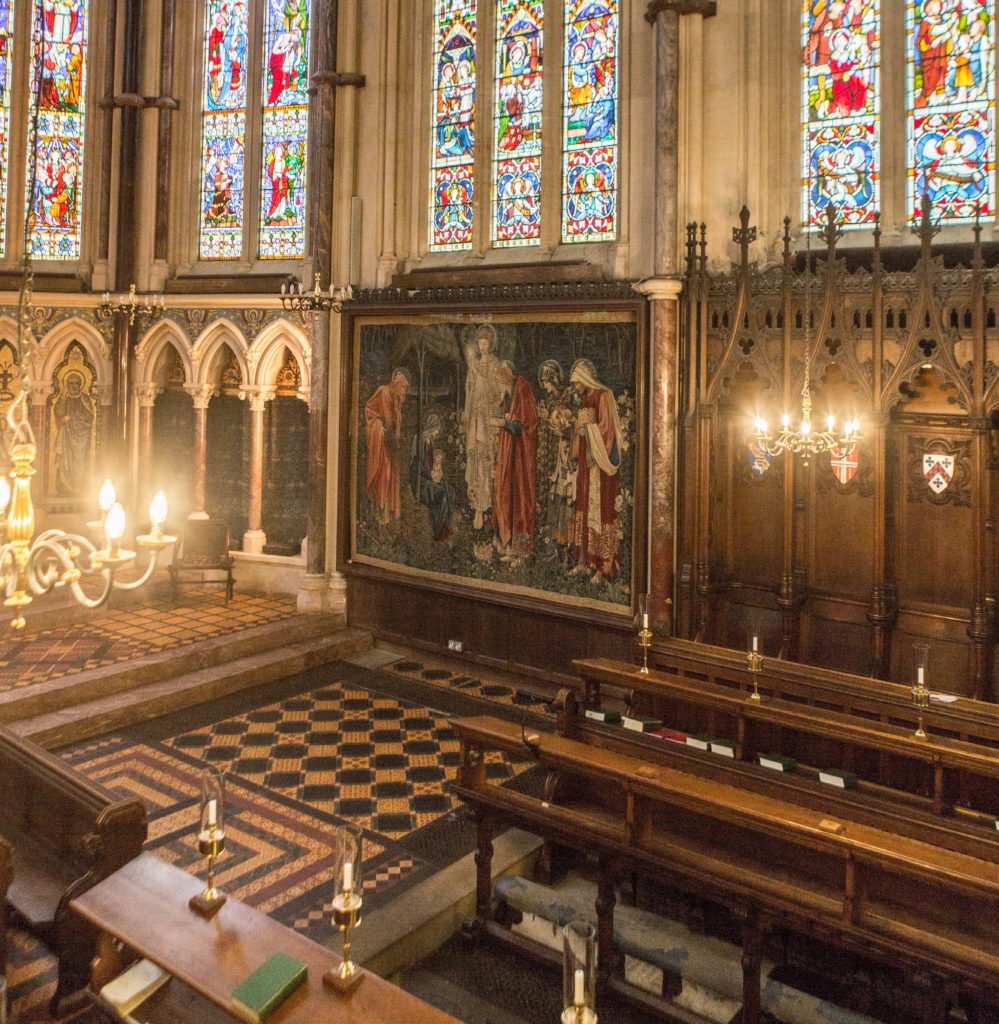 For over six years, Oxford's Exeter College had been looking for a practical and affordable solution to re-glaze "Adoration of the Magi", a tapestry hanging in their chapel. The cherished piece was completed in 1890 and is significant not only as a work of art, but as a unique part of the college's history. The main conservation concerns included light damage and protection from the environment including dust, insects, humidity and temperature. However, protecting the condition of the tapestry brought challenges including its size, the limited width of the exterior chapel doors through which the glazing would have to pass and the existing frame design.
For over six years, Oxford's Exeter College had been looking for a practical and affordable solution to re-glaze "Adoration of the Magi", a tapestry hanging in their chapel. The cherished piece was completed in 1890 and is significant not only as a work of art, but as a unique part of the college's history. The main conservation concerns included light damage and protection from the environment including dust, insects, humidity and temperature. However, protecting the condition of the tapestry brought challenges including its size, the limited width of the exterior chapel doors through which the glazing would have to pass and the existing frame design.
Wessex Pictures, an authorized Tru Vue distributor in the United Kingdom was approached to work on the project, and determined that a seamed version of Optium Museum Acrylic should be used. Compared to glass, Optium was roughly half the weight, making the use of the original frame possible. The delivery and installation required significant forethought, modification and caution, but the Optium was safely installed and is serving its purpose of preservation.
 Conservation framing was central to the project. Professional conservator Georgie Dennis explained how Optium contributed to that goal, “Seamed Optium is really a fantastic solution in that it protects the work; it filters UV out, which is one of the main damaging factors. It is incredibly clear; it doesn't reflect the light so it's almost as if it's not there, which is ultimately what you are trying to achieve.” The situation of the tapestry in an active chapel made glazing an important requirement. Optium was designated to protect the artwork from various risks associated with the presence of the public, and the use of the space in which the tapestry is displayed.
Conservation framing was central to the project. Professional conservator Georgie Dennis explained how Optium contributed to that goal, “Seamed Optium is really a fantastic solution in that it protects the work; it filters UV out, which is one of the main damaging factors. It is incredibly clear; it doesn't reflect the light so it's almost as if it's not there, which is ultimately what you are trying to achieve.” The situation of the tapestry in an active chapel made glazing an important requirement. Optium was designated to protect the artwork from various risks associated with the presence of the public, and the use of the space in which the tapestry is displayed.
With the conservation and re-glazing complete, a significant difference can be seen in the tapestry's appearance. The colors are more vivid, with the lines much cleaner. The college's current chaplain referred to the tapestry as an artistic movement, commenting, “I think it is vitally important that today we are still working in that spirit, by making sure we have the best way of conserving it, and using it so that first both ourselves and future generations can relish in this tapestry and perhaps get a glimpse of something beyond our everyday life.”
Research and Development
Apogee invests in research and development and supports a robust, enterprise-wide new product development process to ensure our products remain at the forefront of the industry. Apogee’s products are developed to meet today’s stringent energy code requirements, allowing architects and others to design buildings that consume less energy and create healthy and comfortable spaces for occupants.
Apogee offers solutions to customers considering their own environmental impact and maintains a product set that is aligned with customers needing options in the transition to a greener economy.
Recent examples of Apogee's product innovation include:
- EFCO 590X steel replica window
- Alumicor ThermaWall 2600 curtainwall
- Expansion of the Tubelite ForceFront Blast product family
- Viracon PLUS Smart Glass
- Alumicor TerraPorte terrace doors
- EFCO XTherm high-peformance thermal framing systems
- Linetec Eco-Friendly anodizing and specialty finishes
- Tubelite 400TU ultra-thermal curtainwall
- Viracon Thermal Spacer - VTS™
- Viracon VZRE and VZE high-performance solar control glass coatings
- Viracon VRE-4725 high-performance solar control coating
Recognition for Product Innovation
We're proud to have received recognition for many of our industry-leading new product innovations:
- Viracon PLUS Smart Glass – Product Innovation Award, 2021, Glass Magazine | Reader’s Choice Award, 2021, US Glass | VISION Award, 2021, Facilities Net | Construction Product Award, 2021, BLT Built Design Award | Top 75 Products, 2021, Building Design + Construction
- Harmon – Wilson and The Elm, 2021 Project of the Year in the mixed-use category | ENR Mid-Atlantic
- Harmon – Victory Commons One, 2021 Best New Office Project, D CEO’s Commercial Real Estate Awards
- Harmon – BMO Tower, 2021 Project of the Year, Milwaukee Business Journal’s Real Estate Awards
- Alumicor – Liberty Village 80 Atlantic office building, 2021 Canadian Green Building Award, SABmag
- US Glass, 2020 Green Award Winner, BUILDINGS Media 2020 Money-Saving Products Winner, Declare Label – LBC Red List Free: Linetec’s Bordeaux Anodize
- BUILDINGS Media, 2020 Money-Saving Products Winner: Tubelite’s ForceFront Storm
- Metal Architecture, 2020 Smooth Metal Wall Panel category winner – National Museum of the United States Army, EFCO curtainwall and aluminum fins
Managing Product Quality and Risk
Managing Product Quality and Risk
Apogee is committed to continuous improvement and we strive to deliver the highest quality products and services to our customers. The heart of our approach to quality is our Apogee Management System, an on-going effort focused on Lean Principles. Across our enterprise, we utilize tools such as value stream mapping, kaizen events, and problem solving processes to continually improve our operations and enhance quality.
We employ rigorous testing standards to ensure product quality and minimize risk. Depending on the product and its application, testing can include air infiltration, water leakage, structural performance requirements, and life cycle testing – all of which can increase commercial buildings’ energy performance and help reduce greenhouse gas emissions.